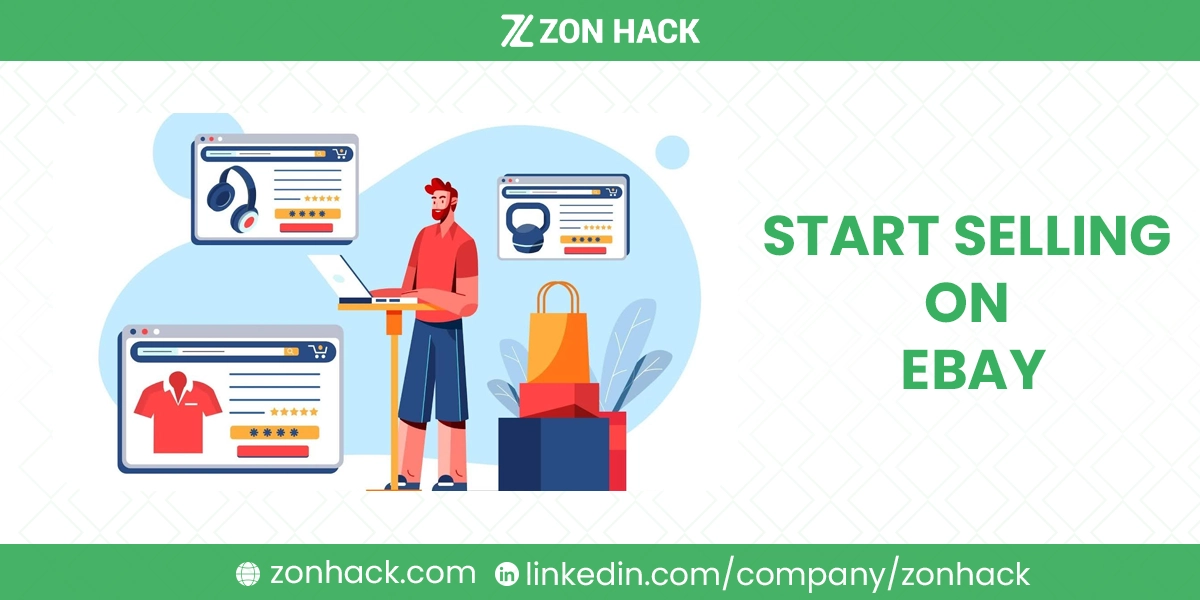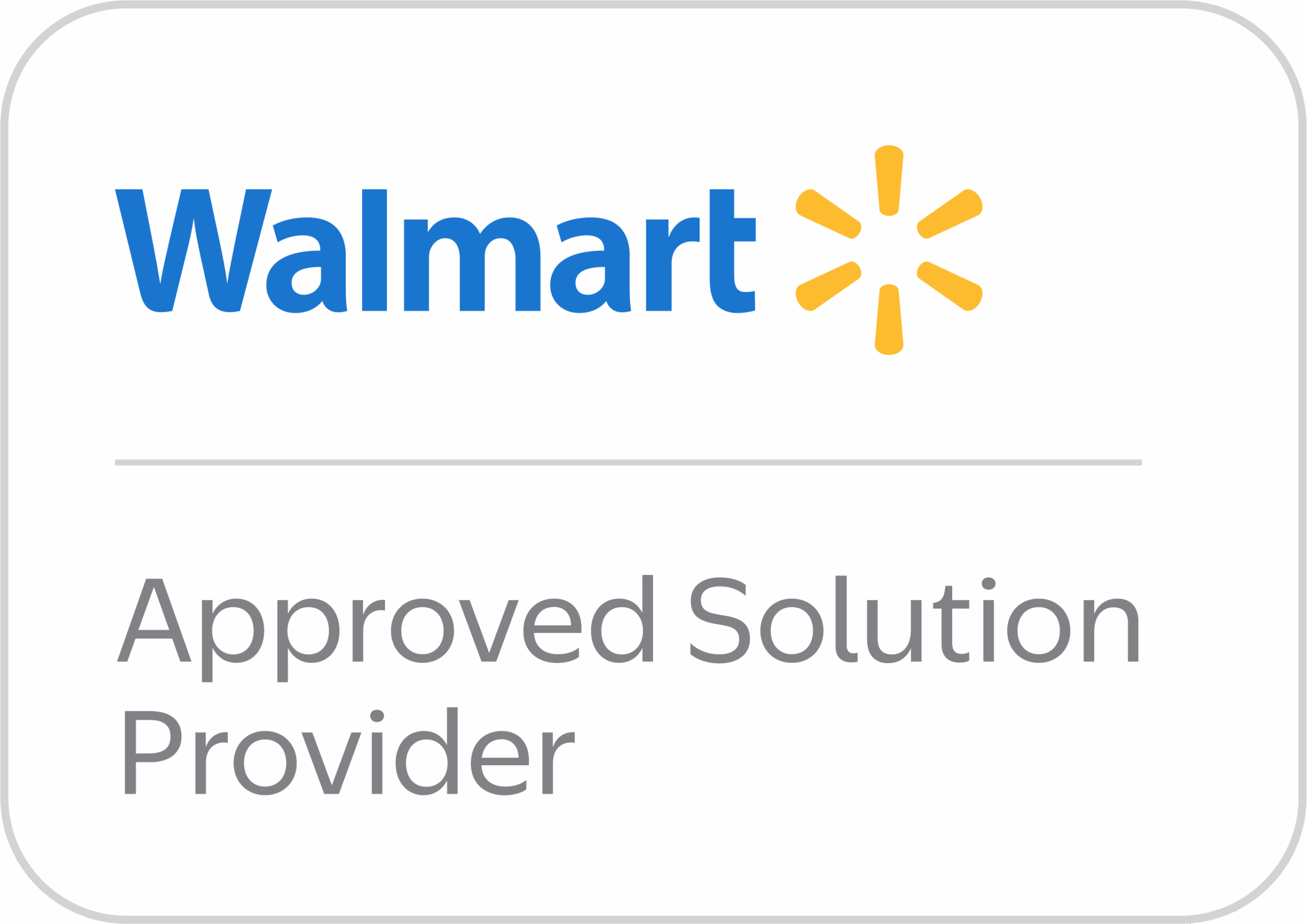Starting to sell on eBay can feel exciting and a little overwhelming at the same time. You get to turn old items lying around the house into cash or even grow a full-time online business. But the process is much easier once you break it down into clear steps.
In this guide, I’ll walk you through exactly how to get started, from creating your account to shipping your first order. I’ll also cover important details about seller verification so you can avoid any surprises.
Steps to Start Selling on Ebay
It’s time to transform from a casual buyer into a sharp seller. This is where we lay the foundation, brick by digital brick.
Set Up Your eBay Account
Your first order of business is establishing your presence. Think of this as getting the keys to your new shop!
Create an Account:
If you’re already an eBay shopper, you’ve got a head start! But if not, the first step is simple: register. I mean, you can’t sell without an account, right? You’ll need to give eBay some basic but important information, like your full name, a valid physical address, and your best email address. This is all standard stuff needed for any online commerce. Take your time, make sure it’s accurate, and get ready for the next level.
Choose Account Type:
Now, do you want to be a casual seller or a business mogul? eBay offers two flavors of accounts. The Personal Account is perfect for those who are just dipping their toes in, maybe selling a few items from the attic or doing a one-time cleanout. The Business Account, on the other hand, is for people who are serious about selling high volumes, building a brand, or who are registered as an official business. Here’s a little secret: you can totally start with a Personal account and then upgrade later once you realize how much you love selling!
Set Up Payments:
This is the fun part: telling eBay where to send your money! eBay now uses its own system called “Managed Payments.” What this means for you is that you need to link a valid checking account. This is where your payouts will land after a sale. You’ll also need to provide some identity and verification details. eBay needs to know you are who you say you are for security and to follow financial rules. Don’t worry, it’s a secure process, but it’s absolutely essential before you can list anything.
2. Prepare Your Item and Research Pricing
Before you snap those photos, we need a plan. What are you selling, and what is it really worth?
What to Sell:
My advice? Start small and simple. Don’t list your grandmother’s fragile antique china cabinet first. Try something you already own and are familiar with. A small, non-fragile item—like a book, a used piece of clothing, or a video game—is perfect. Why? Because you can learn the whole process (listing, shipping, fees) on a low-stakes item. This builds confidence without the stress of potentially damaging something valuable or losing big money.
Research the Market:
Pricing is a tightrope walk. You want to get the most money, but you also need to be competitive enough to actually make the sale. This is where the “Sold Items“ filter on eBay is your best friend. Search for your exact item, then look at the completed listings that have a green price—those are the ones that actually sold! This gives you the true market value, not just what people hope to get. Price too high, and your item will just sit there collecting digital dust.
Calculate Costs:
There is no such thing as a free lunch, and selling on eBay comes with a few essential costs you need to factor into your pricing.
- Insertion Fees: Think of this as the fee to put your item on the shelf. The good news is that most casual sellers get a certain number of free listings every month (often around 250). If you go over that number, a small fee applies.
- Final Value Fees (FVF): This is the main fee, and it’s a percentage of the entire sale amount (item price, plus shipping, plus any sales tax collected). The percentage changes based on the category of the item, but it’s usually in the 12-15% ballpark. Always assume this fee is coming out when you set your price. It prevents any nasty surprises later on!
3. Create Your Listing
This is your moment to shine! A great listing is the difference between a quick sale and a forgotten item.
Take High-Quality Photos:
A picture is worth a thousand words, and on eBay, it’s worth a successful sale! Good photos are crucial. Use natural light—seriously, it makes everything look better. Take clear shots from multiple angles. Make sure you zoom in on any brand tags, specific features, and, yes, any flaws. Honesty is key! You can upload up to 24 photos, so use them all to give the buyer the clearest possible view.
Write an SEO-Optimized Title:
Your title is the digital sign above your shop, and it needs to be search-friendly! Think like a buyer: what words would you type into the search bar? Don’t just write “Great Shoes.” Write something like: “Nike Air Max 270 Men’s Running Shoes Size 9 Black/White New.” Include the brand, model, size, color, and condition. Using these keywords helps your item pop up in more searches.
Write a Detailed Description:
Don’t skimp here. The description is your chance to really connect with the buyer. Be clear, be honest, and be thorough. Include things like exact measurements, material, any unique features, and, most importantly, a detailed, honest assessment of the condition. Never try to hide a scratch or a stain; you’ll end up with an unhappy buyer and a potential return. Be upfront and let them know exactly what they are getting.
Set a Price and Format:
How do you want to sell it? You have two main options:
- Auction-style: This is the classic eBay experience where buyers bid over a set period. It’s great for rare, vintage, or highly sought-after items where the true value is uncertain. You can set a low starting price to attract bidders, but be aware you might sell it for that low price!
- Fixed Price (Buy It Now): This is the most popular format today. You set your price, and a buyer can purchase it immediately. It’s perfect for common items or when you know exactly what you want to get for the item.
Set Shipping Details:
Shipping can be confusing, but a little prep goes a long way.
First, you must weigh and measure your packaged item before you list it. Guessing is a bad idea! Once you have the weight and dimensions, you can choose a shipping option. You can offer a simple flat-rate (where you charge a single price for shipping to everyone) or use eBay’s calculated shipping. Calculated shipping is great because it estimates the cost based on the buyer’s location and your package’s details.
4. Complete the Sale
You did it! The listing is live, and now we wait for the sweet sound of a sale notification.
Monitor Your Listing:
Once your item is live, keep an eye on it. Buyers might have questions, especially if they are interested but need more clarity on sizing or condition. Respond to these questions promptly and politely. Great communication can often turn a hesitant browser into a committed buyer.
Package and Ship Promptly:
The sale is made and payment is confirmed—time to ship! Package your item securely. Use appropriate box sizes, cushioning, and tape. Nobody likes a beat-up box. Aim to ship quickly; 1-2 business days is the golden standard. The absolute best part? You can print shipping labels directly through eBay, which is fast, easy, and often provides discounted rates you can’t get at the post office counter! Make sure you use tracking!
Leave Feedback:
Feedback is the lifeblood of the eBay community. After the buyer receives their item and everything is complete, take a moment to leave them positive feedback. It’s a nice gesture and often prompts them to leave positive feedback for you, which builds your crucial seller rating!
Receive Your Payout:
Ah, the payoff! eBay will process the buyer’s payment and then deduct their fees. The net funds will be sent to your linked bank account. One important thing to know: if you’re a new seller, eBay often holds your first few payments for a short period. This is just a standard safety measure until they verify that you are a legitimate seller who is shipping items as promised. Don’t worry, the money is safe; you just have to be a little patient!
Is THere any Sort of Verification for Selling on Ebay?
Absolutely, yes. As the online world gets more regulated, especially across international borders, verification has become a crucial part of selling. It’s less about being a good seller and more about making sure everyone knows who they are doing business with. It’s all about transparency and trust!
For sellers who are registered as a business (even a sole proprietorship) and are selling to buyers in places like the European Union (EU), there are special rules called the Digital Services Act (DSA) that mandate a clear verification process.
For Registered Business Sellers (EU-Targeting)
If you are selling to EU buyers, the marketplace is required to confirm a few key pieces of information about you or your business:
- Public Business Information: This includes your official business name, your physical business address, a verified email address, and a verified phone number. This information must be clearly displayed on your listings so EU consumers know exactly who they are buying from. It’s all about consumer transparency!
- Registration Number: If your country requires it, you’ll need to provide your official business registration number or an equivalent identification.
- Bank Account Information: Your bank details need to be verified to ensure the money is going to the rightful business owner.
Why is this happening?
These rules, especially the “Know Your Business Customer” (KYBC) obligations under the DSA, are designed to make online trading safer. It means buyers can trace who they are purchasing from, which cuts down on shady operations.
The Verification Timeline
The requirements for this kind of rigorous verification kicked in at different times, depending on whether you were already an established seller or a new face on the block.
1. For New EU Business Sellers (Immediate Requirement)
If you registered as a new business seller listing items to EU buyers, this verification process was immediate, essentially starting around February 17, 2024. New sellers generally have to complete the full verification—providing all the necessary business and identity information—before they can even create their first listing.
2. For Existing EU Business Sellers (Phased Compliance)
Don’t panic if you’ve been selling for years! Marketplaces were given a transition period for their existing business sellers. The final deadline for existing EU business sellers to be fully verified is sometime in 2025. This means platforms like eBay are working with current sellers throughout 2024 to make sure everyone updates their information and becomes fully compliant. My strong advice? Get this done as soon as you can to avoid any potential snags with your account or delayed payouts.
For Non-EU Business Sellers Selling to the EU
If you’re located outside of the EU, these requirements are triggered if you actively list an item on an EU-based eBay site (like ebay.de) or if your listings are set up to be eligible to ship to countries in the European Union. So, if your products can end up in an EU buyer’s hands, the verification rules apply to you as well.
Conclusion
Selling on eBay is one of the easiest ways to step into the world of online business. Once you set up your account, research your items, and create a strong listing, the process becomes smooth and repeatable. The key is to start small, learn as you go, and build your seller reputation over time.
Don’t get discouraged if your first few items don’t sell instantly. Every successful eBay seller started with their first listing. Keep refining your photos, titles, and descriptions. Soon, you’ll develop a style that works for you.




